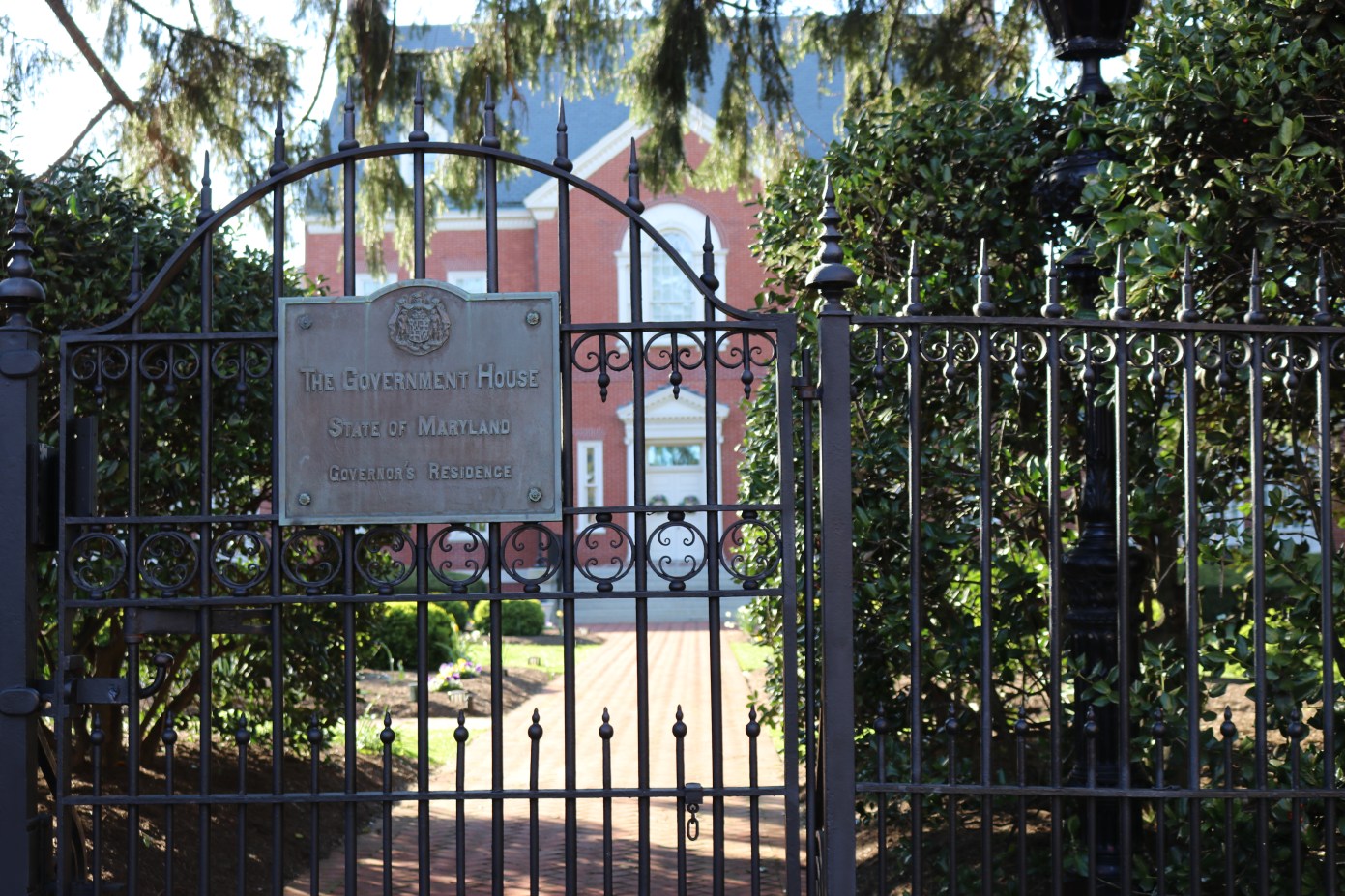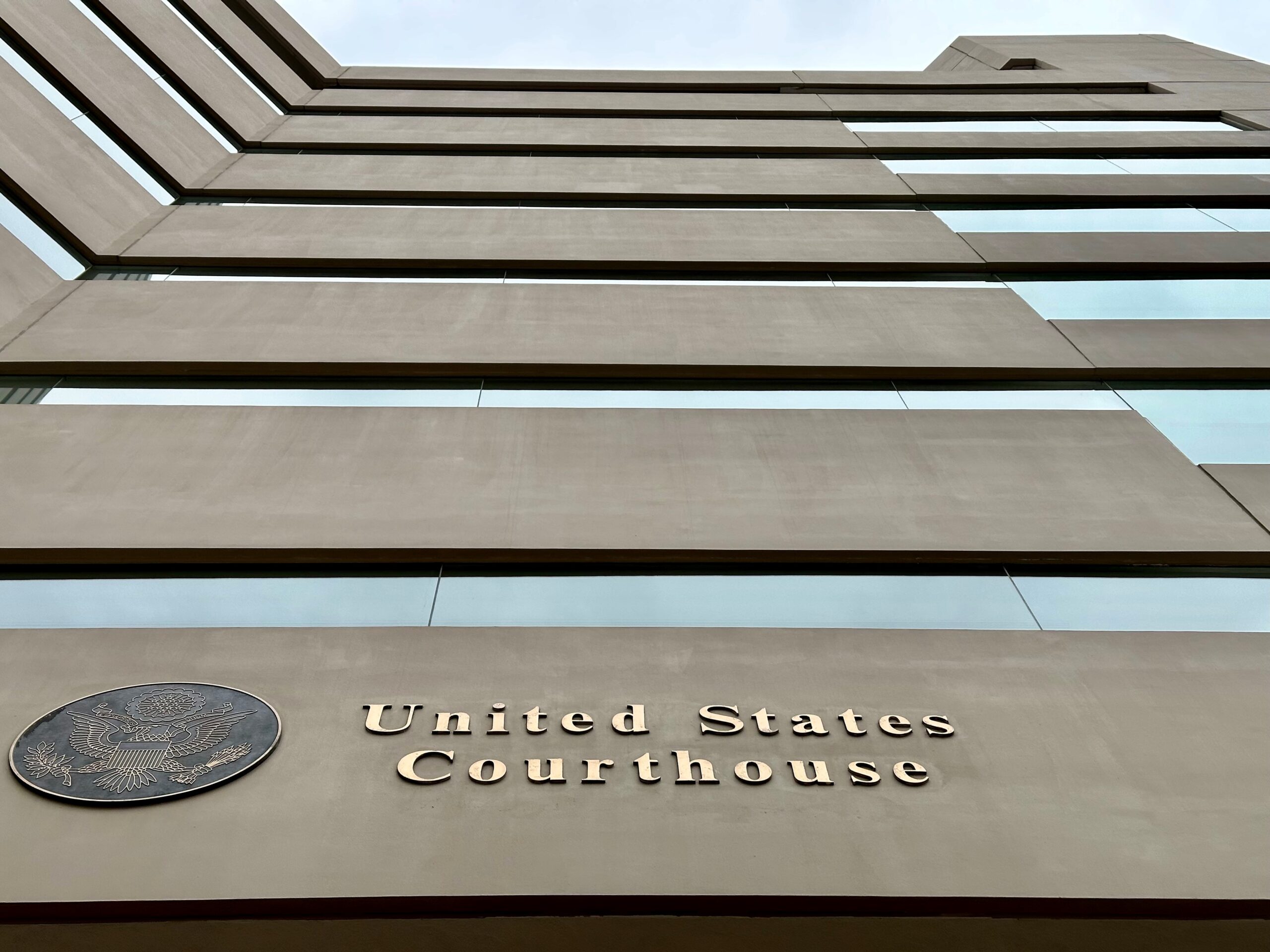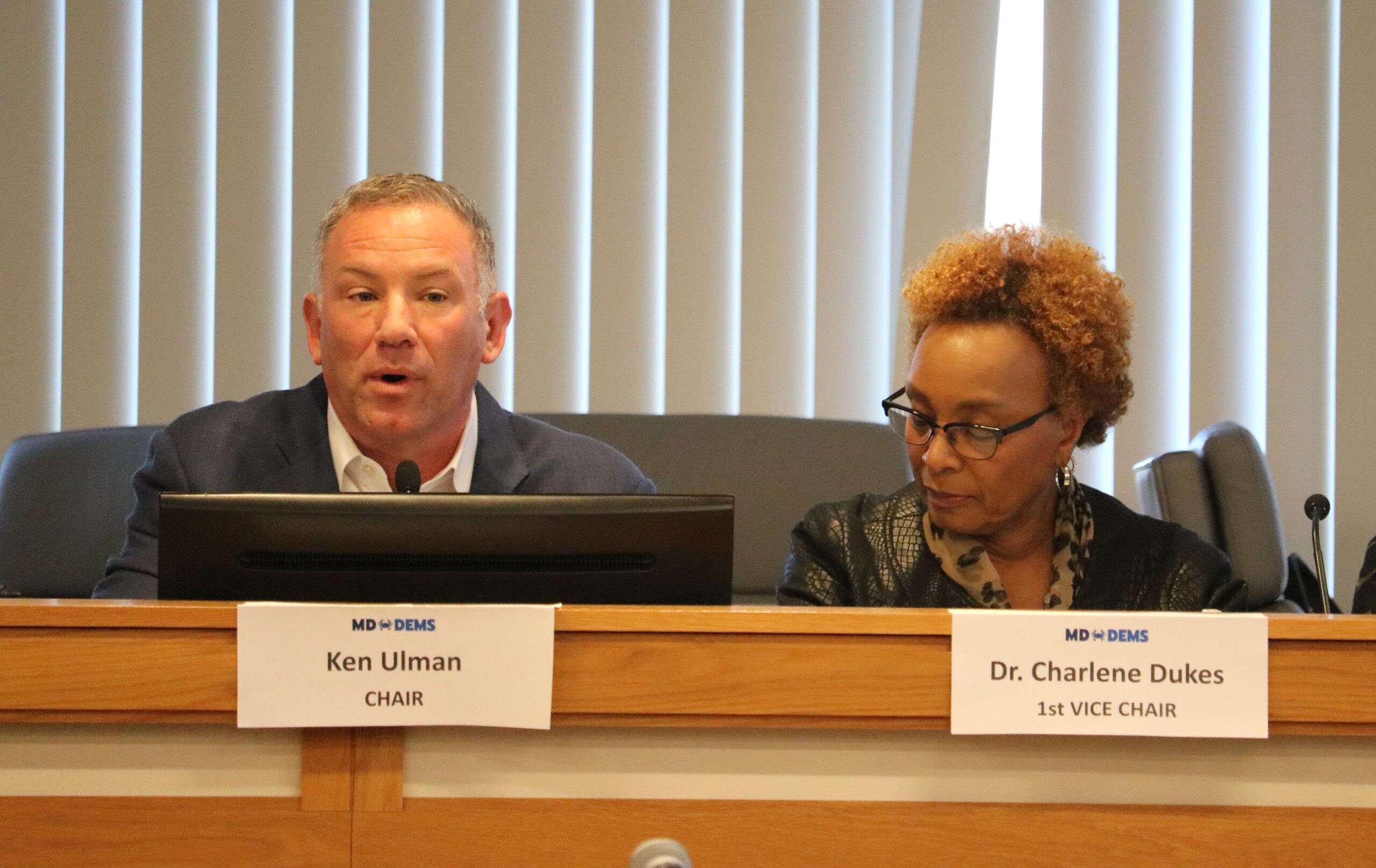Millions Roll Into Gubernatorial Candidates’ War Chests — But Some Lag Behind

The Democratic and Republican primaries for governor have become contests of the haves and the have-nots — and the candidates who are bolstering their financial standing with their own money.
What’s striking is that two of the have-nots are among the best-known and most time-tested Democrats in Maryland.
On the Democratic side, the haves, as expected, are led by another political veteran, Comptroller Peter V.R. Franchot, and a first-time candidate, best-selling author and former foundation CEO Wes Moore. The campaign war chests of both Moore and Franchot have been augmented by the fundraising activities of their running mates. Two other Democratic candidates for governor, former Obama administration Education Secretary John B. King Jr., and former Democratic National Committee Chair Tom Perez, raised more than $2 million.
And in the three-way Republican primary, former state Commerce Secretary Kelly M. Schulz, the establishment favorite, has the biggest campaign treasury — but not by an overwhelming margin.
Campaign finance statements detailing state and local candidates’ fundraising activities for the past year were due to be filed with the Maryland State Board of Elections by 11:59 p.m. Wednesday. Though money isn’t determinative in every election, these fundraising reports, five months before the June 28 primaries, are some key early metrics of the campaign season, as candidates compete to replace popular Republican Gov. Lawrence J. Hogan Jr., who is term-limited.
The leading Democrats announced their top-line fundraising numbers last week, but the campaign finance reports paint a fuller picture. The state of the Republican race has also become a little clearer.
On the GOP side, Schulz, who left Hogan’s cabinet earlier this month, reported raising $1,489,691 since announcing her candidacy last April. She had $1,050,042 on hand as of Jan. 12.
A cursory glance at Schulz’s finance report shows an array of contributions from corporations, business leaders, real estate interests, lawyers, regular Republican donors, and GOP stalwarts long associated with Hogan and the previous Republican governor, Robert L. Ehrlich Jr.
Business-affiliated political action committees chipped in $11,500, according to Schulz’s campaign report. The Road to Freedom Campaign Committee, a PAC associated with former California congressman Ed Royce, donated $2,000. And eight Republican elected officials from Maryland contributed from their campaign accounts — including $3,000 from state Sen. Paul D. Corderman of Washington County.
Perennial Republican candidate Robin Ficker, a Montgomery County attorney and political provocateur, wasn’t far behind Schulz in cash on hand, reporting a $910,395 war chest. But most of that money came from his own pocket — he raised only $3,737 from contributions in the past year.
The third Republican, Frederick County Del. Daniel L. Cox, who has been endorsed by former President Trump, raised $393,103 in the past year and reported $271,638 in the bank as of Jan. 12. That figure includes $28,216 Cox transferred from his state delegate account.
Cox reported two $6,000 donations from Catoctin Mountain Growers, a greenhouse in Keymar; a $5,000 donation from Kimberly Klacik, the high-profile former congressional candidate and conservative news commentator closely associated with the Trumps; $3,126 from Kirby Delauter, the controversial former Frederick County councilmember (who also gave Schulz $500); and $500 from former state Del. Warren E. Miller.
Cox also reported a $1,500 in-kind contribution from REK Firearms in Cambridge — the donation of an AR-15-HBAR rifle, for a fundraising raffle.
The Cox report showed that the candidate was owed $15,193 for reimbursements for several small campaign-related expenses.
The Democrats: Moore and More
Moore’s big haul made headlines last week, and his campaign report included a whopping 975 pages of contributions from individuals — both major donations and small-dollar offerings. Moore’s report also suggested that he had traveled, at a minimum, to New York, Boston, Chicago and Los Angeles for campaign events.
In all, he reported raising $4,026,983 and had $2,406,482 in his campaign account as of Jan. 12. But his campaign’s take was bolstered by the fundraising activity of his candidate for lieutenant governor, former state Del. Aruna Miller (D-Montgomery).
Miller had just $2,027 left over in a largely dormant state fundraising account, but she quickly snapped into action after being tapped as Moore’s running mate last month. She reported raising $773,224 and had $766,679 on hand.
Candidates for lieutenant governor are allowed to maintain a separate fundraising account from the candidate at the top of the ticket. Often, the gubernatorial candidate directs donors who have given the maximum allowable to their campaigns ($6,000) to the campaigns of their LG pick.
The same phenomenon took place with Franchot and with King.
Franchot, who is completing his fourth term as comptroller, reported a total of $3,284,481 on hand in three separate fundraising entities. But following his money isn’t so easy.
Franchot’s own fundraising committee, which began 2021 with $2,216,592 on hand, reported raising $1,650,656. His running mate, former Prince George’s County councilmember Monique Anderson-Walker, raised $333,567 this year and maintained a $104,910 cash balance. The ticket also has a joint fundraising campaign committee, where Franchot and Anderson-Walker transferred most of their money. That account shows a balance of $3,047,458 as of Jan. 12. Franchot’s mostly depleted account had $132,113 cash on hand on Jan. 12.
King, like Moore, is a novice candidate who had a strong financial showing. He reported raising $2,187,476 since becoming a candidate last spring and finished the reporting period with $906,942 on hand. But that number was supplemented by the $314,208 raised and banked since early January by a joint fundraising committee set up for King and his newly minted running mate, Michelle Siri, the head of the Maryland Women’s Law Center.
King’s report, which contains about 600 pages of contributions from individuals, highlights his wide-ranging connections in national education circles.
A large chunk of King’s fundraising came from out of state, with many $6,000 contributions from people living in New York City. His biggest donors include several members of the Tisch family, who manage Loews Corporation, a multi-industry holding company in New York City.
Perez, another top-tier contender, also has a wealth of national contacts, given his high-profile positions as the secretary of Labor under President Obama and his role as the head of the Civil Rights Division at the Department of Justice. But he’s also well-known in the state from his time as Maryland Labor secretary and as a Montgomery County councilmember, and his report reflects donations from both national and state politics. He’s also the favorite of some labor unions in Maryland, and that is paying off.
He raised $2,436,665, spent $952,798, and retained $1,483,867 cash on hand at the end of the reporting period.
Perez reported $40,751 in contributions from federal PACs and campaign committees, including from labor unions, House Speaker Nancy Pelosi (D-Calif.), who donated $5,750, and the Right Side of History PAC, from former Alabama Sen. Doug Jones, which gave $6,000.
Perez reported $6,750 in donations from other state political accounts, including $3,000 each from Sen. Cory V. McCray (D-Baltimore City) and former Del. Stephen Lafferty (D-Baltimore County), who is now Baltimore County’s planning director. His campaign statement also showed $20,000 in donations from Maryland union PACs, including AFSCME Maryland Council 3, the largest state employee union, and International Brotherhood of Electrical Workers.
Perez received contributions from a significant number of people who work at the Baltimore-based law firm Venable LLP, where Perez worked briefly as a partner last year but resigned after learning that the firm was representing the state in an attempt to cut federal pandemic benefits for unemployed workers. Perez’s campaign announced last week that it had raised $2.7 million, a figure that included more than $250,000 from an exploratory committee.
Democratic gubernatorial contender Jon Baron, a nonprofit executive, poured nearly $2 million of his own money into his campaign.
Baron sent $1.7 million to his campaign on Jan. 10 via a loan, according to campaign finance data. He also contributed $190,000 to his campaign via electronic fund transfers between March and September of last year.
Baron, who pledged not to take money from political action committees and corporations, reported raising $420,478 in campaign contributions, including the $190,000 of his own money.
Baron reported $1,733,095 in cash on hand as Jan. 12. His campaign has so far spent $388,147 including $258,505 in salaries and other compensation and $42,500 in fundraising expenses.
Gansler and Baker at the lower end of the fundraising spectrum
Two well-known Maryland politicians, former state Attorney General Douglas F. Gansler and former Prince George’s County Executive Rushern L. Baker III, who were runners-up in the 2014 and 2018 Democratic gubernatorial primaries, respectively, had tough years on the fundraising front.
Gansler’s number, for a one-time fundraising dynamo, was especially jarring. Starting 2021 with $428,241 in his campaign account, he pulled in $509,161 over the past year, with $393,372 on hand as of Jan. 12 after spending $544,030.
Baker’s fundraising was even more anemic on paper — but he’s the lone Democratic candidate for governor participating in the state’s revamped public financing system, so there should be a payoff.
The fundraising committee created for Baker and his running mate, Montgomery County Councilmember Nancy Navarro, raised $128,864 and reported $63,303 on hand as of Jan. 12. But as required by the public finance law, they had to cap their contributions at $250, could only use one entity for fundraising, and could not accept money from businesses, PACs or political committees.
The public financing system pays an 8-1 match for the first $50 raised from every Maryland donor, a 6-1 match for the second $50, and a 2-1 match on the third $50. The Baker campaign calculates that it should be in line for about a $1 million payout from the state in early February, and it then has the option of applying for new matches every two weeks, based on the amount Baker and Navarro raise during that period.
“Our campaign is people-led and funded,” Baker said in a statement Wednesday. “If you want to know who a candidate for Governor is going to fight for on tough issues, you just have to follow the money.”
Meanwhile, former Anne Arundel County executive Laura Neuman, who just entered the Democratic race on Jan. 10, got off to a relatively swift fundraising start, reporting that she took in $109,082 in her first few days as a candidate, including collecting nine contributions of $6,000. She had $107,509 in her campaign account as of Jan. 12.
Neuman is banking on the fact that she’s the only woman in the Democratic race elevating her to the top tier of candidates. But her late start could be an impediment, as her fundraising totals relative to most of her opponents show.
Former Obama administration official Ashwani Jain, who is running a volunteer-powered campaign with no paid staff, reported raising $103,309 in the past year, finishing the reporting period with $43,527 in cash on hand. Jain contributed $48,500 from his own pocket, according to his fundraising report. Other donors named Jain chipped in $33,021.
The 10th Democratic candidate for governor, Jerome Segal, the founder of the now-defunct Bread and Roses Party, filed an affidavit with the state Board of Elections maintaining that he did not raise or spend $1,000 during the fundraising period. However, Segal largely self-funded a bid for the U.S. Senate in 2018, and could begin spending more in the weeks ahead.
Editor’s Note: This story was updated with additional detail and analysis on Jan. 20 at 10:30 a.m.
Bennett Leckrone and Elizabeth Shwe contributed to this report.
Check back with Maryland Matters for more fundraising coverage throughout the week.




 Creative Commons Attribution
Creative Commons Attribution